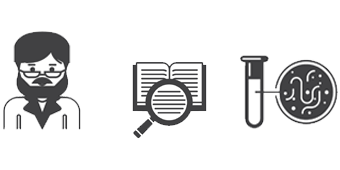Andrey Gutnov, Head of Chemistry at Chiroblock

As the old saying goes: "One day at the desk saves a week in the lab". Nowadays, it truly sounds a bit outdated as the time pressure normally doesn’t allow of lengthy preparations and theoretical considerations before starting practical work in the lab. In the age of chemical databases and global networks it becomes more and more difficult to find the “hidden decisive extra know-how” to publicly available information that is required to provide a customer with a project better founded than those of the competitors.
This means, that if you use the same information sources (e.g. common structural and reagent databases plus searching the English segment of Google) as the rivals, you will most likely end up with the same technical solution at comparable or even higher costs.
So, where is the competitive edge? It is often very problematic to offer effectively a chemistry approach based solely on published Organic Syntheses procedures and optimized production patents as only sources of information: everything that has no alternatives will have no future. So, obviously, it is all about the approach of searching for information, of evaluating the findings and of combining the results the right way. There should always be additional searches for patents, books and dissertations in less common languages, in exotic databases and in journals to find out - with some luck - a fine synthetic trick in a decisive step and/or a valuable analytical information in, say, South-African conference proceedings to gain a crucial advantage, such as cutting down the number of synthetic steps, discovering milder conditions, cheaper starting materials, etc. for the benefit of the customer.
Another story is the global information field itself in its current state. As a long-term project chemist at Chiroblock, editor of The Chemistry of Heterocyclic Compounds journal and referee in other journals, I can witness tremendous general loss of quality of chemical information being submitted to literally all chemical journals. One should be very critical when evaluating not only the yields claimed in “experimentals”, but also the published information as a whole.
After the introduction of the infamous "publish or perish" system, worsened by the misuse of the impact factor and Hirsch-index statistics, many authors are often forced to publish any piece of information (not knowledge!) they can compile into an article without caring about its credibility and usefulness.
The situation with searching for chemical information in the "outside world" is turning slowly into some sort of "The Library of Babel", a post-modern nightmare phenomenon described in a short story by Argentinian writer Jorge Luis Borges . As he wrote: "... its bookshelves contain all possible combinations of twenty-two orthographic symbols (a number which, though unimaginably vast, is not infinite) - that is, all that is able to be expressed, in every language. All - the detailed history of the future, the autobiographies of the Archangels, the faithful catalogue of the Library, thousands and thousands of false catalogues, the proof of the falsity of those false catalogues, a proof of the falsity of the true catalogue, the gnostic gospel of Basilides, the commentary upon that gospel, the commentary on the commentary on that gospel, the true story of your death, the translation of every book into every language, the interpolations of every book into all books, the treatise Bede could have written (but did not) on the mythology of the Saxon people, the lost books of Tacitus."
It is obvious: If one relies on this plethora of published (chemical) information, suggestions, assumptions and repetitions of repetitions (and a bit of concealed knowledge), someone who earns money with developing new synthetic approaches gets lost… Therefore, we at ChiroBlock, have been developing a whole “system of consistency rules” for finding, selecting and evaluating chemical know-how. One of the numerous rules, for instance is that every article published after 1980 needs at least one external practical confirmation of its results before it can be fearlessly used in planned Chiroblock projects.
From the very beginning of its history, Chiroblock has been investing much effort in the maintenance and improvement of the company's internal chemical database which is fairly considered to be the most reliable of all existing data sources. The time when synthetic procedures were described in all details, including warnings about chemical and safety dangers, stability of the obtained compounds and intermediates, their smell and taste is over. Most of modern experimentals include 2-3 sentences saying "in analogy to" and analytics claiming to be "similar to" literature sources.
At Chiroblock, with its more than 75.000 completed syntheses, with eventually every kind of chemistry and synthetic transformations been already explored, thoroughly documented and quickly retrievable at any time, it generally is more useful to take an internal analogous procedure than an exact but obscure external one. The more syntheses are completed internally, the more information and statistics are available which allow to better assess the chemistry and to reduce the risk of failure, finally reducing the costs of the projects for the company and for the customers.
Using the advantage of the broad practical experiences, Chiroblock is also involved in the consultative support business. With growing scientific specialization, the role of correctly evaluated chemical information is growing as well, especially for biologists and material scientists.
As an example, "How can I make my biologically active molecule, catalyst or dye more water-soluble without changing other properties considerably?", is the most frequent question coming from clients from outside of the synthetic chemistry world. The customers expect accurate analysis of all possibilities. Should the best solution be the attachment of polar groups directly to the molecule or, better, its incapsulation into cyclodextrines or ionic lipids? The question can be answered on the basis of previously completed projects stored in database complemented by validated information on new methods and materials appearing in the current literature.
Another ChiroBlock approach to stay abreast of the latest development in synthetic chemistry is the permanent examination of chemical literature published worldwide and extracting information relevant to past, present or potential projects of the company. Especially, practical case studies of relevant examples allow our chemists to be better prepared for projects to come. The information is distributed among the colleagues at Chiroblock in an internal mailing list and discussed. The education program helps all of us to stay in touch with current trends in molecular science.

pic: "https://www.freepik.com/free-photos-vectors/school">School photo created by freepik - www.freepik.com
